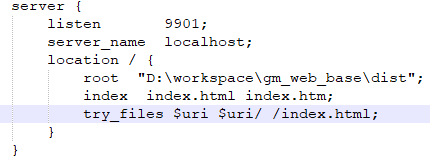I want to make a reactive display, that displays a different number of plots depending on which value of the input selector is chosen. In the case of the mtcars dataset, let's say I want to let the user choose beetween cutting by Nr. of Gears or Nr. of Carburatos for the plots to be produced.
Looking at unique(mtcars$gear) we see it has 4 3 5 so 3 possible values, while unique(mtcars$carb) has 4 1 2 3 6 8 so 6 possible values. I therefore want to produce 6 separate plots when Nr. of Carburators is selected and only 3 plots when Nr. of Gears is selected. I've played with conditionalPanel but it invariably blows up after I switch between selectors once or twice. Help?
Shiny UI:
library(shiny)
library(googleVis)
shinyUI(bootstrapPage(
selectInput(inputId = "choosevar",
label = "Choose Cut Variable:",
choices = c("Nr. of Gears"="gear",
"Nr. of Carburators"="carb")),
htmlOutput('mydisplay') ##Obviously I'll want more than one of these...
# conditionalPanel(...)
))
Shiny Server:
shinyServer(function(input, output) {
#Toy output example for one out of 3 unique gear values:
output$mydisplay <- renderGvis({
gvisColumnChart(
mtcars[mtcars$gear==4,], xvar='hp', yvar='mpg'
)
})
})
Inspired from this, you could do:
ui.R
shinyUI(pageWithSidebar(
headerPanel("Dynamic number of plots"),
sidebarPanel(
selectInput(inputId = "choosevar",
label = "Choose Cut Variable:",
choices = c("Nr. of Gears"="gear", "Nr. of Carburators"="carb"))
),
mainPanel(
# This is the dynamic UI for the plots
uiOutput("plots")
)
))
server.R
library(googleVis)
shinyServer(function(input, output) {
#dynamically create the right number of htmlOutput
output$plots <- renderUI({
plot_output_list <- lapply(unique(mtcars[,input$choosevar]), function(i) {
plotname <- paste0("plot", i)
htmlOutput(plotname)
})
tagList(plot_output_list)
})
# Call renderPlot for each one. Plots are only actually generated when they
# are visible on the web page.
for (i in 1:max(unique(mtcars[,"gear"]),unique(mtcars[,"carb"]))) {
local({
my_i <- i
plotname <- paste0("plot", my_i)
output[[plotname]] <- renderGvis({
data <- mtcars[mtcars[,input$choosevar]==my_i,]
if(dim(data)[1]>0){
gvisColumnChart(
data, xvar='hp', yvar='mpg'
)}
else NULL
})
})
}
})
It basically creates htmlOutput plots dynamically and binds the googleVis plots when there is data in the subset.
Have you tried making a total of 9 (6+3) conditionalPanels? If yes, have you tried 3 naked output panels that have conditionals inside them to switch between the plots, and 3 additional conditionalPanels for the non-overlapped plots?
Another way might be to make a single output panel with an internal conditional, and then stack your 3 or 6 plots into a single plot ala
if(cond1) {
par(mfrow=c(3,1))
plot1
plot2
plot3
} else {
par(mfrow=c(3,2))
plot1
plot2
plot3
plot4
plot5
plot6
}


